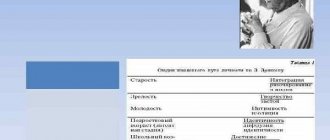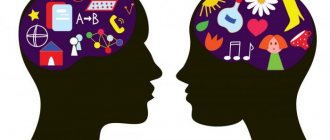There comes a time in life when you feel ready to move to the next level and begin to look for suitable ways to develop your personality. You feel that the lessons of the past have served you well, they have made you stronger and wiser.
And even if things are going well in life, you still want to take the next step. Whether it's a career or your personal growth, eventually you would like to move beyond your current limitations.
So, let's assume that you have decided to move to the next level of development, one question remains: how to do it?
In this article, we will offer you eight amazing strategies to help you take a step forward and look at the conditions and ways of personal development.
But first, let's figure out why we need to develop, set goals and achieve them?
Self-education
No matter who a person is, no matter what conditions he has to live in, through his efforts he can “blind” himself into what he wants. Self-education literally means the process of independently obtaining education in a certain field. Everyone needs it - sales managers, presidents of large corporations, ordinary dishwashers. Without it, a person is doomed to degradation. What are the main strategies for self-directed education?
- Firstly , this process must be continuous, as it contributes to the intellectual development of the individual. Knowledge in the 21st century is growing at a catastrophic speed. At the same time, you can study endlessly. There will always be a so-called “zone of proximal development” - something that a person does not yet know, but can master.
- Secondly , self-education must be accompanied by a high level of motivation. To achieve a certain level of knowledge, you must first of all want to achieve this level. If it has not yet been achieved, perhaps the motivation of those who want to learn is not so high. The self-education of modern man faces hundreds of obstacles. This is constant fatigue after a hard day, lack of time, household and work problems. However, only those who do not give in to despondency can manage to accomplish their plans and, under any circumstances, remain highly motivated to achieve the goal.
- Thirdly , this process must be individualized. Few methods of personal development can be as close and accessible as self-education. To learn a foreign language, master a creative profession, or master any skill, all you need to do is turn on the Internet. But sometimes a lack of faith in one’s strength can be an obstacle. And here the principle of individualization of self-learning comes to the rescue.
For example, a person who has previously read little wants to start studying philosophy, and begins his self-education by reading Kant’s Critique of Pure Reason. Of course, such reading will be “too tough” for him; he will only lose faith in his abilities. You need to start with small steps, taking into account your own learning characteristics.
In the process of self-education - as well as education in general - you should remember: you need to rely only on your own strengths. Neither a teacher nor a more experienced master can replace his own efforts to acquire knowledge.
Helpers in self-development - mobile applications
Convenient mobile apps on your phone make it easier and better to track the changes you want to make in your personal growth program and help you develop individual skills. You can download and install them in the AppStore and Google Play.
Mobile applications for self-development:
- IQ pro - tests for IQ level
- Lumosity - improves thinking abilities
- Unstuck - replaces a trip to a psychologist
- Momentum – the journey – application for motivation
- Daily curiosity - helps expand your horizons
- Words - learn English or German in a playful way
- Blinkist - thousands of book summaries collected
- Weekly is a program for accustoming yourself to a certain action
- Forest - for those who want to stop being distracted
- Quest - motivate a person to do specific things
- Headspace - immersion in a meditative state
- Moodnotes - an application for those who have internal problems
- Black rhetoric - sharp phrases for all occasions
- Quick talker - an assistant in training diction and expressiveness of speech
- Body language - will teach you to “read” people by their movements
- Knowledge base - hundreds of fascinating articles on a variety of topics
- Memorizing numbers. Mnemonics. - simple exercises to train your memory
- Speed reading - learning to read quickly
- Socionics - a reliable description of personality (tests)
- Word of the day - expand your vocabulary
Test yourself with our set of online appearance calculators.
Join us on the Yandex.Zen channel
NLP
It is believed that language appeared in humans simultaneously with consciousness. In ancient times, people did not throw around words just like that, believing that they were of a magical nature. Neurolinguistic programming is a branch of psychology that studies how language affects everyday life.
Many methods of personality development have NLP techniques in their structure. The main idea of this discipline is that the functioning of the nervous system is closely related to language abilities. All the talents and advantages of people, as well as their shortcomings, can be described using language. Language is used primarily to communicate and convey experience. The founding fathers of the NLP movement, R. Bandler and J. Grinder, were confident that words express a person’s mental experience, and therefore language can not only be a tool for representing experience, but also replace it.
Already in ancient times, the greatest minds of mankind knew about the importance of language and its special role in changing life, transforming it. The ancient Greeks considered “logos” to be a mediator between objective reality and the world of ideas. The philosopher Heraclitus considered “logos” to be the principle by which all things in nature are related to each other.
NLP can be useful both for the development of a creative personality and for solving everyday problems. The main concept of this discipline is reframing. Translated from English, this word means “frame shift.” Roughly speaking, reframing is the ability to look at a problem from a different angle. For example, a girl may believe that forced loneliness has a very bad effect on her emotional state. Using reframing, you can look at this situation differently: perhaps she can use the time free from personal relationships to work and improve her skills in the professional field.
Classification of educational methods by V.A. Slastenina
| Methods for forming personality consciousness | Methods of organizing activities and forming experience of social behavior | Methods of stimulation and motivation individual activity and behavior | Self-education methods |
| story | training | competition | control |
| conversation | educational situations | educational game | self-control |
| lecture | pedagogical requirement | discussion | self-esteem |
| dispute | briefing | emotional impact | |
| example method | illustration demonstration | encouragement | |
| punishment |
Application of NLP: examples
One of the classic examples that helps explain the meaning of reframing is a drawing with three fish. One of them - the smallest one - escapes from the pursuit of the middle one. While the average fish, keen on hunting the small one, does not notice the direct danger to its own life.
The first of the drawings has no meaning. It simply depicts two fish - the predator and the hunted. They can symbolize anything: maybe a woman trying to lose weight, or a company manager who dreams of beating competitors and taking a high position. Or maybe these fish symbolize the desire of a common person to get rid of communication with an annoying relative. In all cases, there is a concentration of attention on a strictly defined goal. Rice. 1. Narrow frame
Rice. 2. A broader view of the world
In the second picture the situation is no longer so clear. The fish in the middle can realize other pressing problems of its existence. In addition to being obsessed with losing weight, the woman discovers that she should pay more attention to paying off her loan debts. A manager seeking a promotion should pay attention to the emotional coldness of his wife, who has been plotting a divorce strategy for three months now.
Reframing can be used in both images and words. There are thousands of phrases that, despite their harmlessness, carry critical overtones. For example, the expression “avoid stress” contains an undesirable meaning. It is better to replace it with the word “relax.” Many words are carefully disguised as positivity. For example, the expression “I want to avoid unnecessary expenses.” What's wrong, on the one hand, with this phrase? On the other hand, it is expressed in negative word forms and carries negativism. It is better to replace it with a more life-affirming one: “I want to make sure that I stay within my budget.”
Reframing is a great tool for self-reflection. It is especially useful to pay attention to the phrases with which we think. By changing your thinking, you can have a serious impact on the events in your life.
Test your knowledge
If you want to test your knowledge on the topic of this lesson, you can take a short test consisting of several questions. For each question, only 1 option can be correct. After you select one of the options, the system automatically moves on to the next question. The points you receive are affected by the correctness of your answers and the time spent on completion. Please note that the questions are different each time and the options are mixed.
Statistics Full screen
Evgeniy BuyanovKirill Nogales
← Modern methods Theory exam →
Methods of personality development: biography of great people
Studying the biographies of historical figures and contemporaries helps not only to identify the patterns that led them to success. In many cases, this method gives a charge of motivation, an example of courage and perseverance in any life circumstances. Every person has fear within them at the genetic level.
It is needed in order to protect a person from inevitable death every time. People no longer live in caves, and their lives no longer hang in the balance depending on the decisions of the community. But fears of all kinds - from phobias to social fears - sit deep in every person. All methods of personality development, one way or another, have as their goal overcoming inappropriate fear in a person.
It can be difficult for the modern generation to understand that the habit of heroism can be trained. Samurai, scientists burned for the truth - they all appear before us like shadows of the past. But history has thousands of examples of human heroism. Studying the biographies of both successful people and historical heroes is a powerful method that will allow you to look at life from a slightly different perspective. After all, for the majority, heroism is a gift that is given to a few. Not every artist becomes Raphael, and not every scientist becomes Einstein. Only a few athletes become champions.
But it’s worth studying the biographies of great people in more detail, and it turns out that leadership, intellectual development of the individual, and heroism are the work of ordinary people of flesh and blood. “It was not the gods who fired the pots,” said the ancient Greeks. Consider, for example, the inspiring story of Podolsk cadets - an example of the greatest feat, the result of which was the salvation of the Russian capital from the fascist invaders.
Introduction
It is difficult to overestimate the importance of the topic of personality development, which is the subject of this work. Nowadays, the process of robotization of industry is proceeding at a rapid pace, which is being introduced into everyday life, trying to replace human activity in all spheres of its existence. Experts in the field of artificial intelligence, crossing living things with non-living things, are trying to prove that such crossing will lead to new forms of life, although everyone knows that if you attach a crutch to a person, it will not make him any smarter. On the contrary, his sphere of freedom becomes limited, which has a depressing effect on his psyche. It is enough to remember the name given to robots by the Strugatsky brothers in their novel “Snail on the Mountainside” - undead - to understand: any introduction of non-living things into living things leads to its death.
Nevertheless, the process of automation and robotization can only be welcomed if it is put at the service of man, and not at his destruction. And the fact that with the development of robotization a person’s free time is freed up can only be welcomed if we teach a person to use his time effectively, and not somehow. Those. induce in him a desire to develop his abilities, in particular creative abilities.
In this regard, this work examines some methods of personality development, in particular, in the aspect of social psychology. First, the subject of social psychology is defined, the concept of personality, the concept of personality development, research methods in social psychology and, finally, methods of personality development. The concept of groups, large and small, and their influence on personal development are also noted.
The object of research is personality and methods of social psychology.
The subject is the study of methods of personality development.
The purpose of the work is to analyze methods of personality development.
Tasks
1) Analyze methods of personality development
2) Study methods of personality development
Structure of the work: The course work consists of an introduction, main part, conclusion and a list of sources used.
Victory over fear - an example of Podolsk cadets
Hitler had a plan to capture Moscow, codenamed Typhoon. The result of this plan was to be the complete destruction of women, children and the elderly. And they wanted to flood Moscow itself with water once and for all. But this plan was prevented from coming true by a handful of boys - Podolsk cadets.
On the morning of October 5, 1941, 220 km. from Moscow, the pilot on duty was horrified to discover a 25-kilometer column of tanks moving along the Warsaw Highway. These were the troops commanded by General von Bock. Stalin was at a loss - what to do? The entire Soviet strategy was to fight on enemy territory. He urgently summoned General Zhukov from Leningrad. Zhukov gave the order: detain the enemy for 5-7 days. In fact, the general said only a few words to the cadets: “Children, hold out for at least a few days. Moscow is in mortal danger."
This day was the most ordinary for the cadets of the Podolsk school. Everything changed at once at noon - the combat alarm rang out. 3,100 young boys marched against the murderers who had taken over all of Europe. Among those who fought were those who had never shaved and had never gone anywhere without mom and dad. The forward detachment disabled about 20 tanks and 10 armored cars. Several hundred fascist invaders were killed or wounded.
The Germans dropped red leaflets from their planes. In them they called on the young heroes to stop and come over to their side. “You fought bravely, but now the Warsaw highway is ours all the way to Moscow. Come over to our side. With us you will receive warm clothes and delicious food. This leaflet will be your ticket." However, the young heroes fought to the death. Only on October 25, the remaining cadets were withdrawn for further training to the rear. Of these, only every 10th survived. Over the course of 12 days, the cadets endured more than 100 enemy attacks.
Such an example cannot fail to inspire with its courage of resistance. Domestic psychologist A. Asmolov believed that personality is a specific person who is determined by his moral actions. For personal development, studying biographies and historical examples is a very motivating and useful technique.
Abstract on the topic “Methods of forming personality consciousness”
municipal budgetary educational institution “Ardatovskaya secondary school No. 2 named after. S.I. Obrazumova"
ABSTRACT ON THE TOPIC:
“METHODS FOR FORMING PERSONAL CONSCIOUSNESS”
Completed by: Kuznetsova Lyudmila Mikhailovna
teacher of physics and mathematics MBOU ASSH No. 2
r.p. Ardatov 2022
- Introduction
The main task of pedagogy as a science is the accumulation and systematization of knowledge about human upbringing. Knowledge is recorded in concepts, definitions, general abstract provisions, patterns and laws. Therefore, pedagogy is the science of the laws and patterns of education. Its function is to understand the causes and consequences of variously organized upbringing, development, education and training of people and, on this basis, indicate to pedagogical practice the best ways and means of achieving set goals. The theory equips practicing teachers with professional knowledge about the characteristics of the educational processes of people of different age groups, social formations, the skills to predict, design and implement the educational process in various conditions, and evaluate its effectiveness. Despite the fact that pedagogy deals with “eternal” problems, its subject is specific: it is educational activity carried out in educational institutions, social institutions, and the family. Pedagogy is considered as an applied science that directs its efforts to quickly solve the problems of upbringing, education, and training that arise in society. Pedagogy fulfills a social order. Its successes and failures determine what kind of people the society will be filled with, how quickly or slowly it will develop.
2. The concept of personal consciousness
Consciousness is the highest, human-specific form of generalized reflection of the objective stable properties and patterns of the surrounding world, the formation of a person’s internal model of the external world, as a result of which knowledge and transformation of the surrounding reality is achieved. The function of consciousness is to formulate the goals of activity, to preliminary mentally construct actions and anticipate their results, which ensures reasonable regulation of human behavior and activity. A person’s consciousness includes a certain attitude towards the environment and other people. There are two layers of consciousness (V.P. Zinchenko):
I. Existential consciousness (consciousness for being), including:
1) biodynamic properties of movements, experience of actions;
2) sensory images.
II. Reflective consciousness (consciousness for consciousness), including:
- meaning;
- meaning.
The world of industrial, objective-practical activity correlates with the biodynamic fabric of movement and action (the existential layer of consciousness). The world of ideas, imaginations, cultural symbols and signs correlates with the sensory fabric (of existential consciousness). Consciousness is born and is present in all these worlds. The epicenter of consciousness is the consciousness of one’s own “I”.
Consciousness: 1) is born in being, 2) reflects being, 3) creates being.
Personality - in its most general form - is an individual, as a subject of relationships and conscious activity, who has a stable system of socially significant traits, consciousness and self-awareness.
Personal development refers to 2 types of phenomena:
– biological development,
those. organic maturation of the brain and anatomical and biological structures.
– Mental development,
those. certain dynamics of mental and volitional development.
Personality formation is a complex, contradictory and at the same time natural process, influenced by two groups of factors: biological and social. On the one hand, in the process of personality formation, the main factor is the social in the form of the entire complex of purely human influences (this includes education, upbringing, social living conditions, culture, traditions, customs, etc.) On the other hand, there are and biological (even genetic) factors - such as features of neurodynamic processes, unconditioned reactions, instincts, temperament, etc.
Personality is the result of upbringing. The meaning of education is the education of such a person who would harmoniously join society.
3. Methods of forming the consciousness of the individual
Methods for forming consciousness are:
1. learning is a purposeful process of bilateral activity between the teacher and students to transfer and assimilate knowledge, skills and abilities;
2. education - in a broad sense, is a purposeful process of forming the intellect, physical and spiritual strength of an individual, preparing him for life, active participation in work.
3. education – also interpreted in two senses. In a narrow sense, education = result (secondary education, higher education, etc.). In a broad sense, education presupposes greater self-direction of the individual, his initiative aimed at educating himself, forming his human image.
The synonymous name is methods of persuasion. They are mainly addressed to the consciousness of the individual. Their functions: the formation of knowledge about morality, work, communication, etc. in the minds of schoolchildren; formation of ideas, concepts, relationships, values, views; generalization, analysis of schoolchildren’s own experience; transformation of public values, norms, attitudes into individual ones. The main tool, source of persuasion methods is the word, message and discussion of information. This is not only the word of an adult, but also the judgment of students. The word of an authoritative teacher can be a powerful method of influencing the minds and feelings of schoolchildren, but this requires high culture and professional skill. This group of methods includes conversation, lecture, story, explanation, debate, example, suggestion.
Lecture, story, explanation
These are monologue forms. The lecture as a systematic presentation of the problem is accessible to high school students. Each of these forms requires information content, accessibility, emotionality, and persuasiveness. Lecture topics: social life, moral, aesthetic problems, issues of communication, self-education, conflicts, etc.
Conversation and debate
- methods where the intellectual and emotional activity of the schoolchildren themselves takes place. An educational conversation usually consists of a brief introduction by the teacher and posing questions for discussion, mainly of a problematic nature. To conduct a debate, you need to formulate a name, questions for discussion, select a leader (if it is not a teacher), and familiarize the participants with the rules. The result of the discussion should not be the obligatory agreement of everyone, but the receipt and comprehension of information, independent reflection and choice. In Western psychology there is a method of group discussion, close to conversation, debate.
Example
– story, display, discussion, analysis of a sample, literary and/or life fact, personality. Its functions are illustration, specification of general problems, activation of children’s own mental work. Its action is based on the personality’s ability to imitate, the nature of which depends on age. Younger schoolchildren take ready-made samples. Imitation of adolescents is selective and more independent. In youth it is based on active internal work. Literary and historical figures, peers, adults, parents, and teachers serve as role models. The latter imposes special requirements on the teacher. Standards formed by the media and art play an important role. Often, mass culture has a negative effect on children and adolescents.
Suggestion as a pedagogical method is rarely described in textbooks. Suggestion
is
an influence on a person using emotional, irrational techniques with a reduced criticality of the individual, with a certain trust in the suggestor. It is mainly used in medicine and psychotherapy. The theory and practice of suggestion in the learning process is being developed (G.K. Lozanov). In education, suggestion is expressed in creating an emotional background for shared experiences with the help of music, poetry, etc. Elements of psychological training are also used to create an emotional state that promotes a change in consciousness.
In the spiritual life and activity of the individual, there is a constant struggle between ordinary and scientific consciousness. Expanding the sphere of communication and activity, encountering more and more new phenomena of life, increasing attention to their own inner world give rise to deep thoughts, problems, and a desire to figure everything out for themselves. In search of an answer to the questions that arise in his mind, the student becomes increasingly convinced that the experience he has accumulated in judgments and assessments turns out to be insufficient for an objective and comprehensive analysis of social relations, ideals, standards and other values that determine the socialist way of life. And here a teacher comes to the aid of the student, who brings into his consciousness the knowledge of the principles, norms, rules, and regulations of the individual society. On the basis of conscious and ideologically grounded knowledge, a system of firm and clear views and beliefs is formed.
As a structural element of consciousness, the category of knowledge includes ideas and concepts, i.e. generalized knowledge about a whole group of homogeneous phenomena, united by the commonality of their essential features. The form of existence of a concept is the word. Therefore, the formation of consciousness is primarily associated with methods of verbal influence on the individual.
Story
A story is a consistent presentation of predominantly factual material, carried out in a descriptive or narrative form. It is widely used in teaching humanitarian subjects, as well as in presenting biographical material, characterizing images, describing objects, natural phenomena, and social events. A number of requirements are imposed on the story as a method of pedagogical activity: logic, consistency and evidence of presentation; clarity, imagery, emotionality; taking into account age characteristics, including with regard to duration (10 minutes in elementary grades and 30 minutes in high school). Of great importance, especially in younger and middle ages, is the story when organizing value-oriented activities. By influencing the feelings of children, the story helps them understand and assimilate the meaning of the moral assessments and norms of behavior contained in it. An example of this kind of stories can be the stories of L.N. Tolstoy “Bone”, V.A. Oseyeva “Sons” and others. Three main objectives of this method can be identified when applied in educational work: to evoke positive moral feelings (empathy, sympathy, joy, pride) or indignation at the negative actions and deeds of the characters in the story; reveal the content of moral concepts and norms of behavior; present an image of moral behavior and evoke a desire to imitate a positive example. If, with the help of a story, it is not possible to provide a clear and precise understanding in cases where it is necessary to prove the correctness of any provisions (laws, principles, rules, norms of behavior, etc.), the method of explanation is used. The explanation is characterized by an evidential form of presentation, based on the use of logically related inferences that establish the truth of a given judgment. In many cases, the explanation is combined with students' observations, with questions from the teacher to the students and questions from the students to the teacher, and can develop into a conversation.
Conversations
With all the richness and diversity of ideological and thematic content, the conversations have as their main purpose to attract students themselves to evaluate events, actions, and phenomena of social life and on this basis to form in them a communist attitude towards the surrounding reality, towards their civil, political and moral responsibilities. At the same time, the persuasive meaning of the problems discussed during the conversation will be much higher if they find support in the child’s personal experience, in his affairs, actions and actions.
The conversation should be based on facts that reveal the social, moral or aesthetic content or other aspects of social life. Such facts, positive or negative, can be the activity of a certain person or his individual property enshrined in a word, a moral rule, a generalized literary image, an organized or planned pedagogical model. The form of presentation of individual episodes and facts may be different, but it must certainly lead students to think, the result of which is the recognition of a certain personality quality behind this or that action. Recognition and correct assessment of personality traits require the ability to isolate the motives and goals of a person’s behavior and compare them with generally accepted norms, analyze facts, highlight the essential features of each learned concept, and distract them from all accompanying, but secondary in this case, manifestations of personality.
In educational practice, conversations have become perhaps the most widespread. This circumstance, however, should not give the novice teacher the impression that conducting a conversation is a simple matter that does not require special preparation and careful organization. Often conversations (especially ethical ones) are a set of boring, boring maxims. It is often forgotten that excessive, inept repetition of even noble ideas can give rise to a nihilistic attitude towards them in a young person. These ideas, only formally declared, but not accepted by those educated as true, pose questions to the student, the answers to which are then sometimes drawn not from the best source, contrary to the wishes of the teachers. Without words, no education is possible. However, verbal methods of influence are a double-edged weapon that can bring not only benefit, but also harm. The conversation, as a rule, begins with a rationale for its topic. Such justification should prepare students for the upcoming discussion as a vitally important and not a far-fetched matter. At the main stage of the conversation, the teacher gives a starting point, material for discussion, and then poses questions in such a way that students freely express their judgments, come to independent conclusions and generalizations. The less the teacher himself says, the better he can transform himself, enter the world of children, wonder, rejoice, and be indignant with them, the more successful the conversation will be. His task can be defined in two words: to guide and correct students. In the final speech, the teacher summarizes all the statements, formulates on their basis the most rational, from his point of view, solution to the problem under discussion, and outlines a specific program of action to consolidate the norm adopted as a result of the conversation in the practice of behavior and activities of students.
Individual conversations are especially difficult for a young teacher. Unfortunately, such conversations are most often held in connection with frequently arising local conflicts and violations of discipline. The teacher reacts to this kind of facts either immediately or through a delayed conversation. But it will be better if individual conversations are conducted according to a predetermined plan, in a certain system. Then they are proactive in nature, making individual adjustments to the general program of educational influences.
Organization and conduct of conversations have a pronounced age aspect. Thus, in relation to primary school age, it is advisable to build conversations inductively, i.e. go from a specific action to a generalization. Extracurricular reading is widely used at this age. A book read in childhood told N.K. Krupskaya remains in the memory for almost a lifetime and influences the further development of the children. Analysis and discussion of books read and materials from children's periodicals broaden the horizons of students, arouse in them socially valuable feelings, thanks to which children actively respond to the phenomena of social life.
With age, when schoolchildren learn to analyze the facts of behavior and activity, the ability to operate with concepts of a higher level of generality, the selection of the content of conversations and the methodology for conducting them can and should increasingly rely on the proactive actions of students, taking into account their growing demands and value judgments. Ethical conversation is a question-and-answer method of involving students in discussing and analyzing actions and developing moral assessments; it is one of the oldest methods of didactic work. The teacher listens and takes into account the opinions and point of view of his interlocutor.
Its goal is to deepen and strengthen moral concepts, to form a system of moral views and beliefs. This is especially effective in grades 5–8. It is good when an ethical conversation ends with a real useful activity in which its participants can practically consolidate the provisions, norms and rules of behavior discussed during the conversation. The conversation should not be allowed to turn into a lecture.
Success depends on how warm the nature of the conversation is and whether the students reveal their souls in it. The material of the conversation should be understandable to the students and based on their experience. It is important that students independently come to the right conclusion.
It is a mistake to think that conversation is a spontaneous method.
Highly professional educators do not conduct conversations often and prepare for them thoroughly. High professionals demand an individual conversation with the guilty students. It is very important that no barrier arises. If a student misunderstands the situation, you need to tactfully explain it to him, give the conversation a sincere character, then he can count on complete success.
The leading function is stimulating, but the method also performs other functions with no less success. There is no method so versatile and effective in all respects. The essence of the conversation is to, with the help of targeted and skillfully posed questions, encourage students to update the knowledge they already know and achieve the assimilation of new ones through independent reflection, conclusions and generalizations.
Lectures
The formation of consciousness begins with explaining to schoolchildren the simplest ideas and concepts in the field of social life, labor, science and technology, ethics and aesthetics. Whatever topic the teacher starts a conversation with the children on, be it collecting scrap metal or joining the pioneers, evaluating a new film, or patronizing a kindergarten, he must be sure that the upcoming conversation is vitally relevant for the class and will inspire moral trust in the children. , readiness for empathy, positive response.
Explanation and story prepare the transition to a more complex method of education - a lecture. This is a detailed and organized systematic presentation of the essence of a particular problem of socio-political, moral, ideological and aesthetic content, organized in an accessible form. The logical center of the lecture is some theoretical generalization related to the sphere of scientific consciousness. The specific facts that form the basis of a conversation or story here serve only as an illustration or as a starting point. The persuasiveness of evidence and arguments, validity and compositional harmony, unfeigned pathos, the lively and sincere word of the teacher contribute to the ideological and emotional impact of lectures. IN AND. Lenin warned that one should not irresponsibly throw around words containing great meaning, or repeat general slogans and appeals excessively often. “Repeating them so nakedly is harmful; will cause nausea, boredom, anger against chewing gum.” The word can become the greatest educational force, but it can also sow distrust, disappointment, and skepticism.
High school students respond especially sensitively to the teacher’s bright and independent style of thinking, to his ability to find an original, unexpected twist on a topic, to separate a fact from an opinion about a fact, and to express his personal attitude to the material being communicated. The widespread development of the media has given rise to the phenomenon of increased awareness among schoolchildren about various events and aspects of the modern world. This, of course, cannot be ignored. At the same time, it is not difficult to see that to many students half-knowledge seems to be real knowledge. In these conditions, it is all the more necessary to teach schoolchildren to go beyond the obvious, to make the transition from phenomenon to essence.
Knowledge acquires personal meaning, becomes not a passive accessory of mental baggage, but a principle of action, if it is obtained as a result of critical mental work and has passed the test of strength in real life and activity. In this regard, the participation of schoolchildren in Lenin readings has enormous ideological and educational potential. “...To know what Lenin was like, to imagine him in action, in his great deeds, one must read Lenin, his articles, books and speeches, in them he is fully reflected... His image lives in his creations.” Enriching the consciousness of young people, Lenin's readings captivate them with communist purposefulness, the logic of conviction, the precision and refinement of his thoughts, awaken in them a deep inner need to compare life according to Lenin, to look up to him, to consult with him.
Disputes
This method of forming judgments, assessments, and beliefs is based on a long-discovered pattern: knowledge obtained in the course of a clash of opinions and different points of view is always distinguished by a high degree of generality, durability and flexibility. The debate perfectly corresponds to the age characteristics of a high school student, whose emerging personality is characterized by a passionate search for the meaning of life, the desire not to take anything for granted, and the desire to compare facts in order to understand the truth.
The dispute does not require definite and final decisions. It gives schoolchildren the opportunity to analyze concepts and arguments, defend their views, and convince other people of them. To participate in a debate, it is not enough to express your point of view; you need to discover the strengths and weaknesses of the opposing opinion, select evidence that refutes the fallacy of one and confirms the reliability of the other point of view. Dispute teaches the courage to abandon a false point of view in the name of truth.
From a pedagogical point of view, it is extremely important that the questions marked for discussion contain a problem that is vitally important for schoolchildren, truly excite them, and call for an open, sincere conversation. The topic of the debate can be suggested by the students themselves. Why does behavior not always coincide with the demands of life? Where do the indifferent come from? How to understand the words of L.N. Tolstoy “Calmness is spiritual meanness”? How to become the architect of your own happiness? These and many other questions may well become the subject of discussion, a free and relaxed exchange of views.
The debate requires careful preparation of both the teacher and the students. Questions submitted for discussion are prepared in advance, and it is useful to involve the schoolchildren themselves in their development and composition. According to the advice of A. S. Makarenko, a teacher at a debate must be able to speak in such a way that students feel his will, culture, and personality in his words. A real teacher is in no hurry to reject erroneous judgments, will not allow himself to rudely interfere in a dispute, or categorically impose his point of view. He must be delicate and patient, passionate and angry, calm and ironic. This manner of behavior does not offend or humiliate anyone, and does not discourage schoolchildren from participating in debates and openly expressing their views. The leader of the debate is decidedly unsuited to the figure of silence and prohibition. Soviet education is education with truth. Any lack of agreement leaves room for speculation, distorted guesses, and misinterpretations.
The purpose of debates is to create an indicative basis for creative quests and independent decisions.
Example Method
The developing consciousness of a schoolchild is constantly looking for support in real-life, living, concrete examples that personify the communist ideas and ideals that he has assimilated. This search is actively promoted by the phenomenon of imitation, which serves as the psychological basis of example as a method of education. Imitation is not blind copying: it forms in children actions of a new type, both those that coincide in general terms with the ideal, and original actions that are similar in the leading idea of the example. Through imitation, a young person develops social and moral goals of personal behavior and socially established ways of acting.
The nature of imitative activity changes with age and in connection with the expansion of the student’s social experience, depending on his intellectual and moral development. A junior schoolchild usually chooses ready-made models to follow, influencing him by external example. Imitation in adolescents is accompanied by more or less independent judgments and is selective. In youth, imitation is significantly restructured. It becomes more conscious and critical, relies on active internal processing of perceived patterns, and is associated with the increasing role of ideological, moral and civic motives.
At least three stages can be distinguished in the mechanism of imitation.
At the first stage, as a result of perceiving a specific action of another person, the student develops a subjective image of this action and a desire to do the same.
However, the connection between role modeling and subsequent actions may not arise here. This connection is formed in the second stage.
At the third stage, a synthesis of imitative and independent actions occurs, which is actively influenced by life and specially created educational situations.
Thus, imitation and the example based on it can and should find worthy use in the educational process. K.D. drew attention to this. Ushinsky. He emphasized that educational power flows only from the living source of the human personality, that the education of the individual can only be influenced by the personality.
Examples available for imitation surround the child both at home and at school. Examples would be older siblings, father and mother, and grandparents. Even the best students can become them. Here you should remember the recommendations of N.K. Krupskaya, who warned that the use of a positive example in education should not contrast the best examples of behavior of individual schoolchildren with the entire team, and should not be reduced to constant stories “about virtuous boys and girls,” about “exemplary pioneers.” Such didacticism erects a barrier between the best and the worst, often harming those students who are put forward as role models.
Literary heroes, the example of our outstanding contemporaries - heroes of revolution, labor, war, space, scientists and cultural figures, have a huge educational impact on students. But the feat of life and work of V.I. has a particularly attractive force. Lenin, who embodied the best human qualities. The advice of N.K. helps to properly organize the work of educating schoolchildren using Lenin’s example. Krupskaya. In particular, she noted that even in the lower grades of school one cannot limit oneself only to stories about Volodya Ulyanov’s childhood, portray and present him as a kind of good boy. The image of a fearless fighter, an unbending revolutionary, a brilliant thinker and creator should appear before schoolchildren in all its gigantic stature.
In the Soviet school, a coherent system of educating students developed based on the example of the life and work of V.I. Lenin. Among the main directions of this work were the development of Lenin's lessons, Lenin's readings, Lenin's tests, participation in the All-Union campaign to Lenin's places, in the All-Union Pioneer Expedition "True to Lenin's Testaments", the creation of Lenin's corners, rooms and school museums, gatherings of three generations of Leninists, meetings with people who saw V.I. Lenin, awarded the Order of Lenin, collecting materials on the history of factories, collective farms, state farms and institutions named after V.I. Lenin, watching and discussing films and performances about V.I. Lenin, etc. Experience shows that the example of the life and work of V.I. Lenin enriches the ideological life of students, develops their internal readiness for moral and political education and self-education.
In the eyes of schoolchildren, only that action deserves imitation that is performed by an authoritative and respected person. This fully applies to the teacher. The teacher, through all his behavior and actions, must serve as an example for students, be an example of high morality, ideological conviction, culture, integrity and broad erudition.
4. Conclusion
A combination of developmental methods and means of education should be used during the formation of the pupil’s personality and stimulate in him the ability to actively respond to educational influence, i.e. really be the subject of a specific situation. Educational methods and means are used not only to solve the educational problems of the younger generation, but are also used to assist adults in the processes of socialization, adaptation to new living conditions, correction of behavior style or the nature of relationships with people.
Methods and means of education are used in conjunction. This combination is possible in the context of both a complex and a separate educational situation. For example, as part of the educational work of parents, members of the workforce (pupils, students) and during the educational activities of professionals in special institutions.
The basic concepts used to understand the methods of educational influence on a person and the methods of interaction between the teacher and the pupil include methods, techniques and means of education, forms of education, methods and technology of education.
- Bibliography
1. Andreev V.I. Pedagogy. - Kazan, 2002.
2. Basova N.V. Pedagogy and practical psychology. - Rostov n/d., 1999.
3. Butorina T.S. Fostering patriotism through education. - St. Petersburg, 2004.
4. Vorontsov V.L. The power of knowledge. - M., 1999.
5. Lebedeva O.V. Citizenship Education Classes and Conversations: Grades 5-10. - M., 2005.
6. Likhachev B.T. Pedagogy. - M., 1998.
7. Makarenko A.S. About education. - M., 1990.
8. Malenkova L.I. Education in a modern school. - M., 1999.
9. Podlasy I.P. Pedagogy. - M., 1999.
10. Rozhkov M.I., Bayborodova L.V. Theory and methods of education. - M., 2004.
11. Selivanov V.S. Fundamentals of general pedagogy: Theory and methods of education. - M., 2004.
12. Ushinsky K.D. Selected pedagogical works. T. 2. - M., 1974.
13. Kharlamov I.F. Pedagogy. - M., 1999.
- Links to sources used
- https://www.pedlib.ru/Books/1/0075/1_0075-403.shtml
- https://www.kgau.ru/distance/mf_01/ped-asp/03_01.html
- https://www.detskiysad.ru/ped/ped196.html
- https://vaniorolap.narod.ru/theme8.html
Art therapy: getting rid of the past and harmonizing personality
Personal development methods include, first of all, means that help bring harmony and make it easier for a person to achieve his goals. In this sense, the method of art therapy can serve as a good help. Throughout life, a person experiences a large number of painful emotions. They appear to be the “burden” that slows down the intellectual development of the individual and brings chaos to family life. Accumulating in the unconscious, negative experience prevents you from moving forward, delaying the achievement of goals for months and years.
How to use art therapy?
For this method, you can use plasticine. Art therapy is a great way of self-analysis. First you need to remember the traumatic situation, relive what once brought pain. Then you need to take a piece of plasticine and mold it into an image that matches the sensations. There is no need to rush, you can crush the pieces as much as your heart desires. Allow yourself to cry or be angry in this moment.
Then look from the outside at what came out in the end. There is no need to evaluate the image. You can ask yourself the question: “How much less have my negative experiences become now, after creating this image?”
If the traumatic situation was not too severe, one art therapy session is enough. If the experiences are deep enough, a longer period of time is needed. It is not necessary to use plasticine as the material. In art therapy, you can express feelings using watercolors and pastels.
Modern approaches
The methods of education today dictate several ways of approaching it.
System
Interprets the emerging personality as a holistic entity. The goals, content and organization of educational activities are maximally interconnected. The systematic approach provides a number of conditions for self-realization, creativity, and individuality development.
Methods of social education
Activity-relational
The pupil is encouraged to engage in various activities that contribute to the acquisition of social experience. The developmental influence of this approach manifests itself only if it evokes internal experiences in the person being educated, forces him to show a positive or negative attitude towards what is happening, and stimulates his own activity.
Personality-oriented
Provides the student with opportunities for self-knowledge and self-realization. Ready-made experience is of little use; the basis for change is always the ability to grow and learn, taking into account your own experience. It is not external factors that play the main role; priority is given to the active personality.
Stages of formation of personal and professional qualities
Since the goal of any training is the formation of a professional in a certain specialty, the main stages of the development of personal and professional qualities occur in educational institutions. In addition to interacting with teachers, a person is at the stage of active self-development and self-improvement. Thus, it is during the period of receiving education that the main stages of the formation and development of the main qualities (both personal and professional) necessary for further successful professional activity occur.
The first stage is to determine the future field of activity in general and the profession in particular, based on personal capabilities and personal preferences. Next comes adaptation to unknown conditions of further development. At this stage, a large amount of information is received about the specifics of the job and the qualities that are necessary to succeed in it. After stabilizing the educational process and acquiring some practical skills, a full awareness of one’s suitability in the profession comes. Success in the future depends not so much on the presence of natural qualities and capabilities, but on the constant readiness to work on one’s personal and professional qualities.










